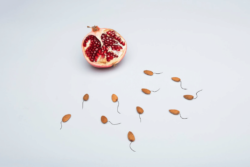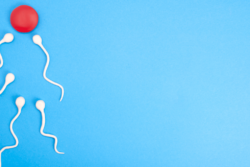Miscarriages are devastating and more often than not, it’s difficult to determine why they happened. The best approach for multiple miscarriages (1 or more) is to rule out each possible cause, one at a time. Depending on when the miscarriage occurs, it can give us a clue as to where to start our investigation.
Miscarriages before week nine can be related to:
- Poor quality DNA from the egg or sperm
- Thin uterine lining
- Lower progesterone levels
- Issues with the uterus being receptive to the baby implanting
- Elevated thyroid antibodies
- Toxin exposure
In this article, I’m going to focus on #6: TOXINS.
Toxins, Conception and Pregnancy
Toxins are sneaky. They enter our bodies by eating, smoking, inhaling, and touching items in our environment. We don’t always realize different toxins are even part of our daily habits or that they make a difference in our health.
Those chemicals get into our bodies and many of them are stuck inside us for years—slowly causing damage. Many chemicals and toxins have been identified as causing problems with fertility. What you may not realize is that there are quite a few chemicals that are thought of or known to increase the likelihood of having a miscarriage.
Whether we know for sure a chemical causes a miscarriage or we think people exposed to them are more likely to have a miscarriage, it doesn’t matter. Either way, they are worth avoiding.
One of the biggest ways individuals are exposed to chemicals is through smoking. In general, the research suggests there is a higher rate of miscarriage in people who continue to smoke during pregnancy (1) and if they are exposed to smoke daily from someone in their life(2).
One 2018 study looked at what chemicals came up in the fetal tissue of babies who miscarried around weeks 6-9. In that study, they found higher levels of aluminum, cadmium, and lead in the baby’s tissue when the person carrying the child was a past smoker and lived in an urban environment. Meaning the person carrying the child had higher levels of aluminum, cadmium, and lead in their body from smoking in the past (not recently) and that passed through the placenta to the growing baby.
In the study, they found people who smoked for more years (2-10 years) and more cigarettes a day (2-5 cigarettes a day) were more likely to have higher aluminum, cadmium, and lead in the baby’s tissue. The higher levels of aluminum, cadmium, and lead in the baby’s tissue found in those who live in an urban setting were thought to come from inhaling more polluted air in an urban and industrial environments. The authors of the study couldn’t say that it was those 3 chemicals that cause the miscarriages, but they felt like these 3 chemicals don’t have any known benefits in the body so they could cause damage to the developing child and make it more likely to result in a miscarriage(3).
If you are considering carrying a child, then it is worth looking into how many of these chemicals you have in your body. It is not just current and past smokers at risk.
Toxins and chemicals can come into our bodies through:
- Work-place exposure
- Smoking or being around someone who is smoking (right now or in the past)
- Breathing in polluted air from the city we live or work in
- Living in a home built before 1960
- Tap water from lead pipes installed before 1960 or repaired with lead solder used until the 1980s
- Drinking water in urban areas
- Lipstick
There are a few testing options to figure out your toxin burden (aka how much is in your body). The most common method used to find these chemicals is through 2 urine tests.
Part 1: The 1st urine test is used to get a baseline on what’s coming out of the body.
Part 2: Take a drug to entice the chemicals to come out and then do another urine test. That 2nd test gives a better picture of what’s actually stored in the body.
There is also the option of using hair to identify levels of heavy metals. Book a visit with a fertility naturopath, who can walk you through the pros and cons of each testing option. It can take time (a few months even) to detox your body from these chemicals. It is vital to know where you stand with these chemicals and remove them before they wreak havoc on your pregnancy plans.
References
Pineles, B. L., Park, E., & Samet, J. M. (2014). Systematic review and meta-analysis of miscarriage and maternal exposure to tobacco smoke during pregnancy. American journal of epidemiology, 179(7), 807–823. https://doi.org/10.1093/aje/kwt334
Wang, L., Yang, Y., Liu, F., Yang, A., Xu, Q., Wang, Q., Shen, H., Zhang, Y., Yan, D., Peng, Z., He, Y., Wang, Y., Xu, J., Zhao, J., Zhang, H., Zhang, Y., Dai, Q., & Ma, X. (2018). Paternal smoking and spontaneous abortion: a population-based retrospective cohort study among non-smoking women aged 20-49 years in rural China. Journal of epidemiology and community health, 72(9), 783–789. https://doi.org/10.1136/jech-2017-210311
Rzymski, P., Niedzielski, P., Poniedziałek, B., Tomczyk, K., & Rzymski, P. (2018). Identification of toxic metals in human embryonic tissues. Archives of medical science : AMS, 14(2), 415–421. https://doi.org/10.5114/aoms.2015.53915




